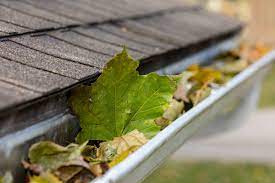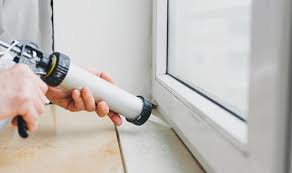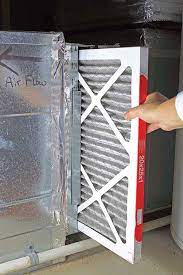Fall Home Maintenance Checklist
It may not feel like Fall in SE Florida yet, but it is still a great time to keep up on those seasonal maintenance tasks to keep your home in good condition and ready for the holidays. Preventative measures protect costly repairs in the future, while adding the enjoyment of your most valuable asset.
Clean Your Gutters
Your roof’s drainage system annually diverts thousands of gallons of water from your house’s exterior and foundation walls, so it’s vital to keep this system flowing smoothly. Clogged gutters can lead to damaged exterior surfaces. A worthy addition to your gutters are mesh gutter guards to keep debris from returning and clogging your gutters.
Seal Up Air Leaks
Gaps in caulk and weatherstripping let cold air into your warm home, and sealing up a drafty house can save up to 20% on your heating bills, according to the U.S. Department of Energy. Weatherstripping is easily the most cost-effective way to reduce heating and cooling costs. You can tell that your weatherstripping needs to be replaced if it looks warped, cracked, or otherwise deteriorated; if you can feel a draft around the edge of your window or door; or if you can see light around the edges of your door or window.
In addition to inspecting weatherstripping, check for missing or damaged caulk around windows, doors, and entry points for electrical, cable, phone, and gas. Seal any gaps with a suitable caulk. If drafts around windows persist, consider getting your windows replaced. Glass with multiple panes, spacers, or filler gasses (such as argon or krypton) will likely solve these problems. A professional can swap out your problem windows with more efficient models that will increase your level of comfort while decreasing your heating bills.
Inspect Your Roof
Here in SE Florida, roof integrity is extremely important.
- Look for Algae, Moss, or Piles of Leaves. Moss is especially dangerous because it soaks up rainwater like a sponge. The moisture can cause the wooden structure underneath your roof to mold and decay, which can compromise the structural integrity of your roof. Moss killer and/or elbow grease with a broom or brush can remove this algae.
- Look for Buckled or Curled Shingles. Misshapen shingles can compromise the integrity of your roof, letting in water and causing poor ventilation, so they should be replaced. If more than one-third of your shingles are curling during your roof inspection and repair process, it’s time to re-shingle the entire roof.
- Check for Damaged, Missing, or Old Shingles. Missing or damaged shingles can also let water seep through your roof. If you have wooden shingles or wood shake shingles, inspect them for signs of dry rot, either from the ground or from a ladder (don’t walk on a wooden shingle or shake roof). Asbestos, slate, or clay tile roofs can suffer from breakage, so look for cracked, chipped, broken, or altogether missing shingles. If you’re performing a metal roof inspection, check for signs of corrosion, rust, stress wrinkling, or other wear.
- Inspect the Roof Up Close. If you get on to your roof, look for damage to the flashings around the chimney, dormers, and vent pipes. (Flashings are the metal materials on your roof that redirect water.) Damaged or corroded flashings can let water into the interior structure of your roof and could contribute to rot in the structure of your roof and the walls of your home. If you see damage, you’ll probably need to replace the flashings.
Replace Your Furnace Filter
Furnace filters trap dust that would otherwise be distributed throughout your home. Clogged filters make it harder to keep your home at a comfortable temperature, thus increasing your utility bills. Simple monthly cleaning is all it takes to keep these filters free of debris. Disposable filters can be vacuumed once before replacement. Foam filters can also be vacuumed, but they don’t need to be replaced unless they are damaged.
Give Your Furnace a Checkup
Once a year, it’s a good idea to have your heating system inspected by a professional. To avoid the last-minute rush, consider scheduling this task in early fall before the heating season begins. Here are signs that you should have an inspection performed sooner:
- Noisy belts: Unusual screeches or whines could be a signal that belts connected to the blower motor are worn or damaged.
- Poor performance: A heating system that doesn’t seem to work as well as it once did could be a sign of various problems. Your heating ducts might be blocked, the burners might be misadjusted, or the blower motor could be on its last legs. The first step, however, is to make sure your furnace filter is clean.
- Erratic behavior: This could be caused by a faulty thermostat or a misadjusted furnace.
Review Emergency and Safety Features
- Smoke and carbon monoxide detectors: Replace the batteries in each smoke and carbon monoxide (CO) detector, then vacuum them with a soft brush attachment. Test the detectors by pressing the test button. If you haven’t already, install a smoke detector on every floor of your home.
- Fire extinguishers: Every home should have at least one fire extinguisher rated for all fire types (look for an A-B-C rating on the label). At a minimum, keep one near the kitchen; having one per floor isn’t a bad idea. Annually, check the indicator on the pressure gauge to make sure the extinguisher is charged. Make certain that the lock pin is intact and firmly in place, and check that the discharge nozzle is not clogged. Clean the extinguisher and check it for dents, scratches, and corrosion. Replace if the damage seems severe. Note: Fire extinguishers that are more than six years old should be replaced. Mark the date of purchase on the new unit with a permanent marker.
- Fire escape plans: Every bedroom should have two exit paths. Make sure windows aren’t blocked by furniture or other items. Ideally, each upper-floor bedroom should have a rope ladder near the window for emergency exits. Review what to do in case of fire, and arrange a safe meeting place for everyone away from the house.
Touch Up the Exterior Paint on a Lovely Fall Day
Not only will it make your home look welcoming while adding curb appeal, touching up exterior paint will help protect its trim, flashing and siding from damage from the elements.
I hope these tips help you with your Fall home maintenance planning! As always, feel free to reach out to me with any of your real estate needs.
Annette Dammeyer, REALTOR®
Coldwell Banker Realty
808.747.3686
SL 3535792

 Facebook
Facebook
 X
X
 Pinterest
Pinterest
 Copy Link
Copy Link











